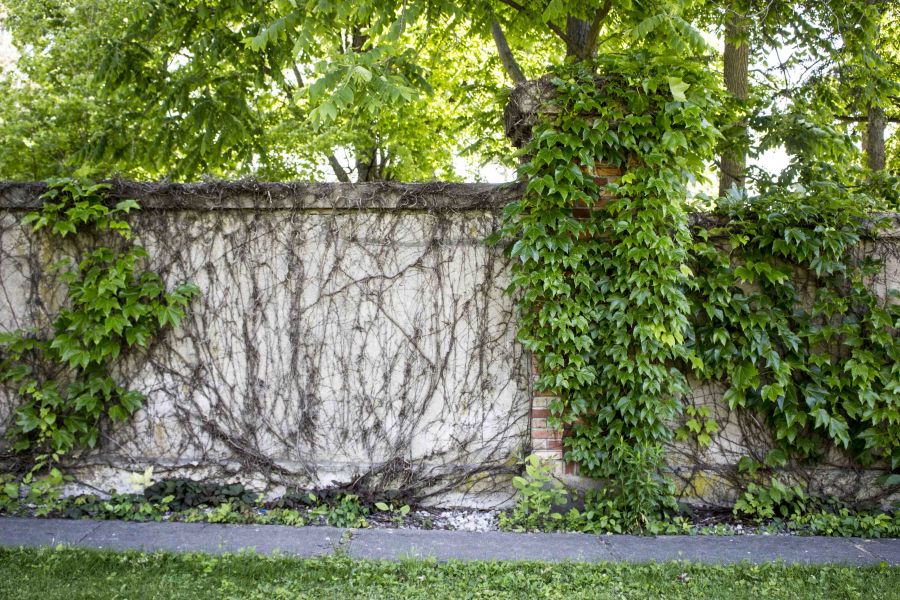The many concerned residents asking why Niagara-on-the-Lake Town staff have not stopped extensive tree-cutting now have the answer, but it's not what they were hoping to hear.
The removal of trees from John and Charlotte Street properties required no permit and broke no laws, an extensive investigation by the Town has revealed.
Lord Mayor-elect Betty Disero said Monday Town staff looked at “all the options” to block further tree removal.
“We're not leaving one door open in terms of what (the property owner's) rights are and what our rights are,” she said.
But at the end of the day, they found no agency regulation, and no municipal, regional or provincial legislation that could stop the work. Benny Marotta of Two Sisters Resort has the right to cut down trees on his four properties with the exception of elements of the historic Dunington-Grubb landscape on the three John Street lots. “As far as we can tell, that landscape doesn't extend to Charlotte Street,” said Disero.
With the recent election, the Town between council terms and no meetings scheduled until December, Marotta picked the time to take down trees when the Town was at its weakest, Disero said. A tree bylaw that could have been passed by the last term of council was deferred to the new council to decide.
Marotta said his timing had nothing to do with catching the Town at a “weak moment.” He wanted the work done this fall, and his crew had a two-week window to do the work. It will continue until Friday, he said, when he hopes the cutting will be complete, although there may be “some minor work” to be done, and the crew could be back in the winter.
He is proposing to build a six-storey hotel with amenities on two properties. The other two are expected to be developed as a residential subdivision, but there is no application for that before the Town yet.
Monday afternoon, the Town released information about the tree removal based on contact with the Niagara Peninsula Conservation Authority, The Ministry of Tourism, Culture and Sport, the Ministry of Natural Resources, and the Regional planning department.
The Town had staff onsite on several days, including CAO Holly Dowd, and staff from bylaw enforcement, operations and planning departments. They also asked heritage experts to visit the site and consulted with the Town's lawyers regarding trees covered by the heritage designation application.
The tree-cutting occurring recently, said Disero, was mostly on the west side of 200 John Street and 588 Charlotte Street, the expected location of a subdivision.
More than a year ago, Marotta had trees removed from the east side of 200 John Street, requiring a permit from the NPCA because part of the lot is in the Greenbelt. He said he planned to plant grapevines on that portion of the property.
But the NPCA said the west side of the John Street lot and 588 Charlotte do not include any features protected by the Niagara Region tree and forest conservation bylaw, so no permit is required for the tree-cutting that has taken place on those properties. Trees and debris removal from the watercourse was also permitted, the NPCA's forester Dan Drennan said, after visiting the site with an NPCA compliance officer.
NPCA staff have inspected the site on several occasions, and have walked the entire One Mile Creek and the swale connecting to One Mile Creek, determining the area is not covered under the Regional tree bylaw “and the tree removal that has taken place does not constitute an interference with a watercourse.”
NPCA staff said they would continue to monitor the situation.
With neither a Town nor a Regional tree bylaw that covers the destruction of trees on private property, there is nothing to stop the activity on those four properties, the Town concluded, with the exception of the trees which are part of the Dunington-Grubb landscape, and are protected by the Town's heritage designation application.
The Town report alleges “there may have been significant damage” to key heritage attributes listed in the Town's heritage designation, which includes other landscape features.
The Town is not releasing any more information about what may have been damaged. Heritage attributes listed in the heritage designation applicatiion, in addition to trees and plantings, include features such as a stone path, a sunken lily pond with a sculpture, and arched stone bridges.
Marotta is appealing the heritage designation, and while the application is under appeal he is not permitted to do any work to the heritage elements. He said Tuesday he hasn't touched anything that is part of that significant heritage landscape.
The protected area is marked off, he said, and when he walked the site Monday with two Town staff members and a heritage consultant, “They said, 'well done, you've done great, we have no issue with what you're doing,'” said Marotta.
Asked specifically whether any features other than trees, such as a stone path, could have been damaged during tree removal, he said, “We did not touch anything within that Dunington-Grubb landsape area. Nothing was touched.”
Dunington-Grubb was a landscape design company in the early 1900s responsible for beautiful private and public gardens of the time, including many of the mature trees, plantings and the boxwood hedge on the Randwood Estate.
Both the Town and Marotta have now referred the matter to their lawyers.
As for the massive logging trucks residents have witnessed carting away many thick tree trunks, Marotta said the trees were mostly pine, many of them damaged. He plans to donate them to Mennonites to make furniture, he said.










